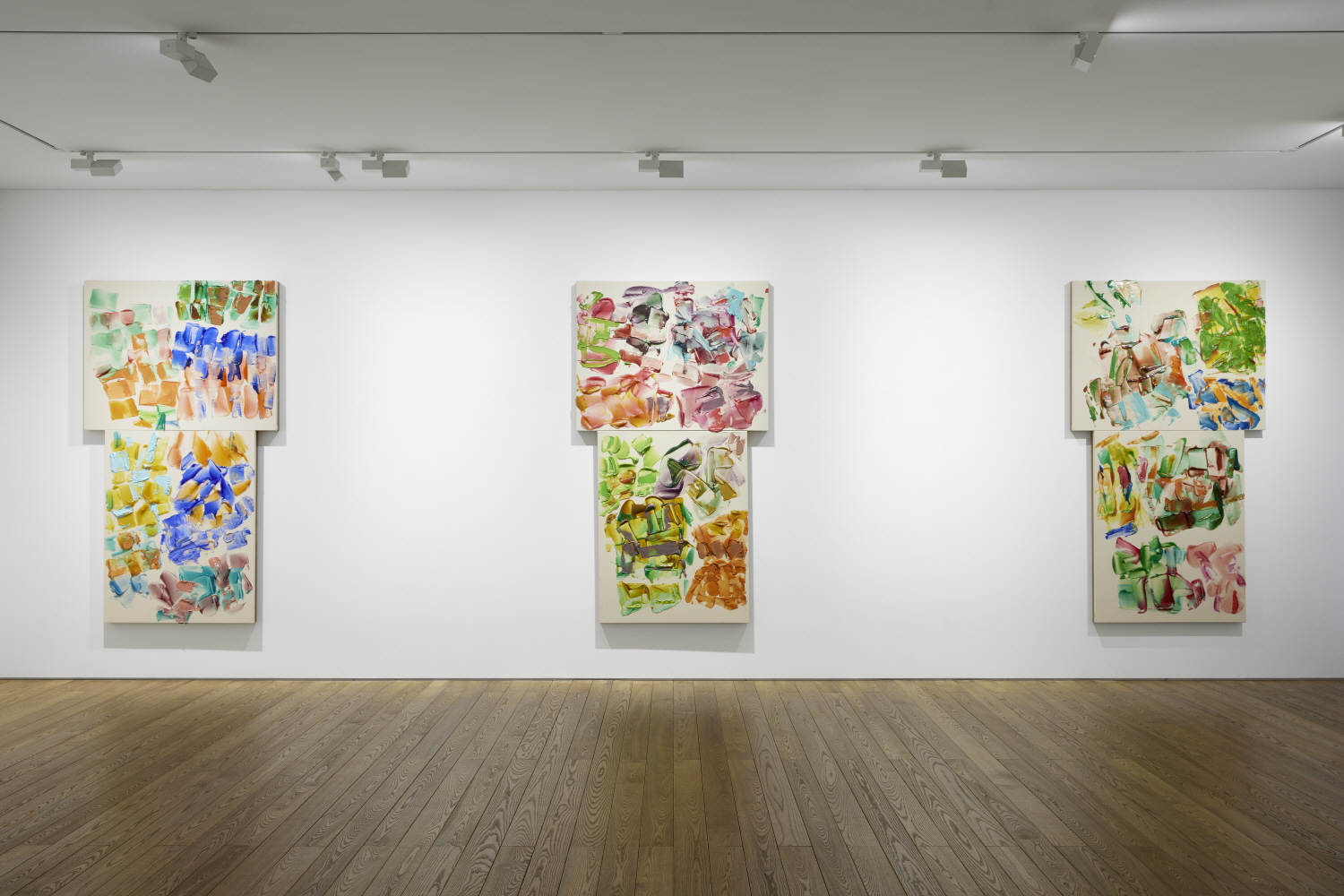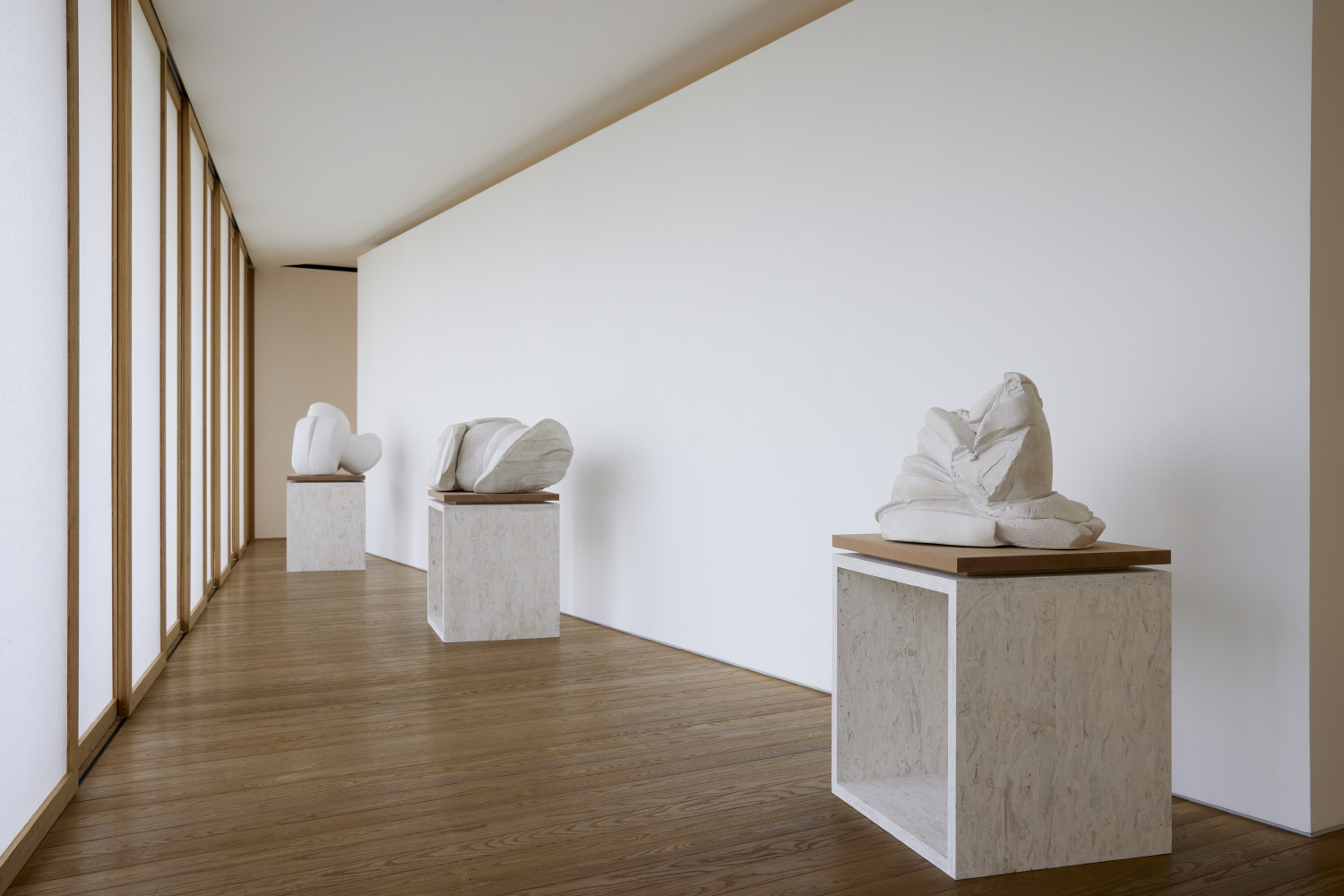SPACE September 2024 (No. 682)

Exhibition view of ‘Form at Now and Later’, second floor / Image courtesy of Pace Gallery / ©Sangtae Kim

Exhibition view of ‘Form at Now and Later’, third floor / Image courtesy of Pace Gallery / ©Sangtae Kim
A solo exhibition titled ‘Form at Now and Later’ by Okazaki Kenjiro was on show at Pace Gallery Seoul until Aug. 17. Okazaki is a Japanese contemporary artist who has created artworks across media, from painting, sculpture, performance, and robotics. For this exhibition exhibition, Okazaki focused on showcasing his paintings, sculptures, and relief works. While this was the first time that Okazaki’s artworks were displayed in Korea since his debut in 1978, his name was already known in the Korean architectural scene. Not only was his review article on Isozaki Arata featured in SPACE (covered in SPACE No. 388), Okazaki also participated in the architectural world when he oversaw the art direction of the 2002 Venice Biennale Japanese Pavilion. In Japan, there are houses and public spaces designed by Okazaki. His grandfather, father and brother are all architects. But Okazaki is mainly a painter, with collestions at prominent museums such as the National Museum of Modern Art Tokyo and the Museum of Contemproary Art Tokyo. The main attraction at this exhibition was a series named T-shaped canvas. By placing two canvases in a T shape, two pictures laid on the same plane were brought to be perceived as though they were in two different dimensions. For example, if the bottom picture depicted the floor, the upper picture would depict the walls; similarly, if the bottom picture depicted the walls, the upper picture would depict the ceiling. The idea of using two images that portray different dimensions to create an ‘architectural space’ in the observer’s mind is an insight that Okazaki picked up from studying the 15th century architect Filippo Brunelleschi. While the T-shaped canvas series explores how people perceive space via canvas positioning, the adjacent zero thumbnail series is an artwork that places more emphasis on the canvas’ contents. While the subject of this artwork resembles marks created by random brushstrokes, these marks in fact represent the artist’s conclusions when contemplating the essential qualities of landmark works across art history, from the Renaissance, Impressionism, and Japanese traditional painting. The title ‘thumbnail’ does not only refer to the smallest possible category of canvas in terms of size but more importantly it reflects the meaning of a ‘summary’. Four sculpture works were installed on the 3rd floor. The pure white colour of the artificial marble contrasts with the vibrant colours of the paintings. The liberal form of the white blanket- like sculpture that lies messily upon a tatami mat appears like the architectural model of an avant garde architect. The word jikonjigo from the Japanese title of this exhibition ‘Keijinojikonjigo (形而の而今而後)’ refers to enlightenment before death. The artist explained that he underwent a transformation in his view toward space after recently suffering from a stroke. In a way, even his illness-induced epiphany was spatial.





